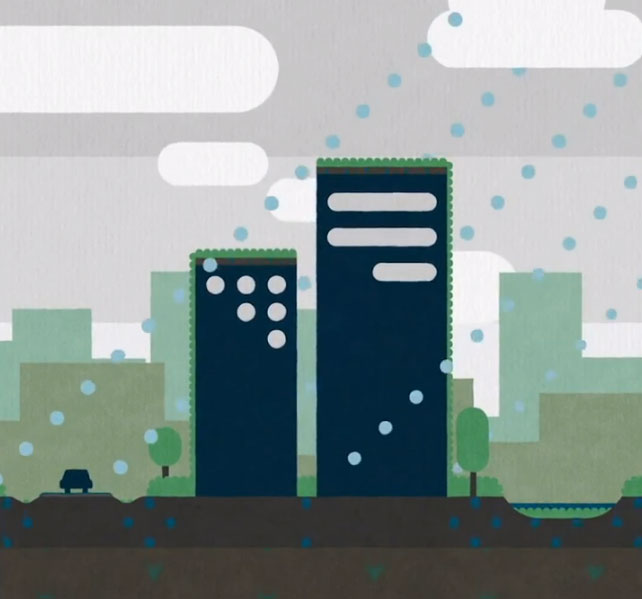Video: Urban flood protection solutions do not require sewers
In natural ecosystems, rainwater is absorbed by soil and plants. The majority then evaporates and the remainder penetrates deeper into the ground. Evaporation water cools the surrounding environment. Cities destroyed this system. Rain water cannot penetrate through concrete, flowed into the sewer.

Buildings are covered with greenery on the roof and outside.
The sponge city mimics the natural water cycle, keeping rainwater where it falls. Buildings are covered with greenery on the roof and outside.
Down to the street surface, urban wetlands and ditches on both sides of the road are called Swales , which function to absorb and retain water, keeping the city cool, being able to resist flooding and cool the surrounding environment itself. summer by imitating nature.
- How do major cities in the world seize and reuse rainwater?
- The world's longest automatic flood protection system
- Explore the flood protection system of treasure walls in the world's No. 1 country
- WB helps Vietnam cope with urban flood risks
- The 11-year-old boy won the creative award for flood proof bags
- Explore the huge sewer system in Tokyo
- Farm in buildings - Sustainable solutions for urban in the 21st century
- Potential of urban forestry
- Clean flood water by micro-ball in Thailand
- Ideas for environmental protection - Small initiatives, great benefits
- Ebara introduced the technology of flood protection pumps
- Street art: The idea of interesting recycling of trash
 Why does steam cause burns worse than boiling water?
Why does steam cause burns worse than boiling water? Lightning-fast octopus is amazing
Lightning-fast octopus is amazing Video: The secret to quickly fold clothes in just 2 seconds for busy people
Video: The secret to quickly fold clothes in just 2 seconds for busy people The eel waving off his head still bites the can of water
The eel waving off his head still bites the can of water